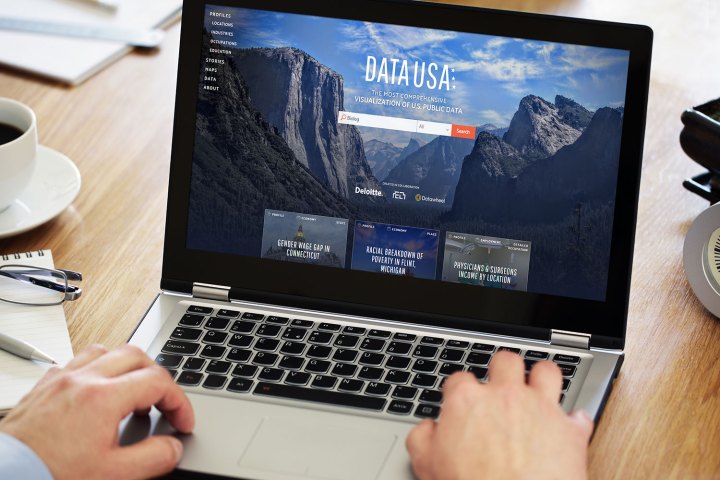
For example, if you’ve considered moving for a job transfer, your experiences likely have been like mine as you try to figure out what different towns and cities are really like to live in. With typical online government databases you first have to figure out if what you want is really there, learn how to navigate the interface, and finally search for data that’s often in tables and lists that aren’t very clear. This is where Data USA to the rescue.
The data visualization project was sponsored and supported by consulting and auditing firm Deloitte, according to The New York Times. Deloitte not only provided the funding, but also “expertise on how people use government data sets in business and for research.”
So if you decide to search on a city or town, you just type the name in the center screen query box and click “Search.” I looked at Boulder, Colorado and learned that the population is 102,002, it’s the 295th of 29,509 census designated places, median household income is $58,062, and the media age is 28.3. That’s nice, but it’s not all. First off, the background image shows the Rocky Mountains, which border the hip little city. At the bottom of the screen there are menu icons for About, Economy, Demographics, Education, Housing & Living, and Health & Safety.
See also: MIT biologists have developed a programming language for bacteria
It’s easy to find the data on public health, traffic patterns, energy consumption, family incomes, and many other topics, but Data USA isn’t just about data, it’s about visualization. When you click on a location’s sub-menus the data comes back fast but it may take a couple of seconds for the graphs to appear. The category is typically summarized or described in a short sentence or two but the data is converted to simple-to-understand graphs. Most of the graphs I saw were horizontal or vertical bar charts. The graphics are not over done or glitzy, in my opinion, but very easy to understand.
Research always has been about finding accurate information. Thanks to Data USA, it appears that info is going to be even easier to understand.
Editors' Recommendations
- Walmart+: Everything you need to know about Walmart’s retail subscription
- Intel Rocket Lake: Everything you need to know about the 11th-gen processors
- Hyperscape: Here’s everything you need to know about new battle royale game
- Here’s everything you need to know about Ubisoft Forward
- Andrew Yang’s Data Dividend Project wants you to get paid for your data




